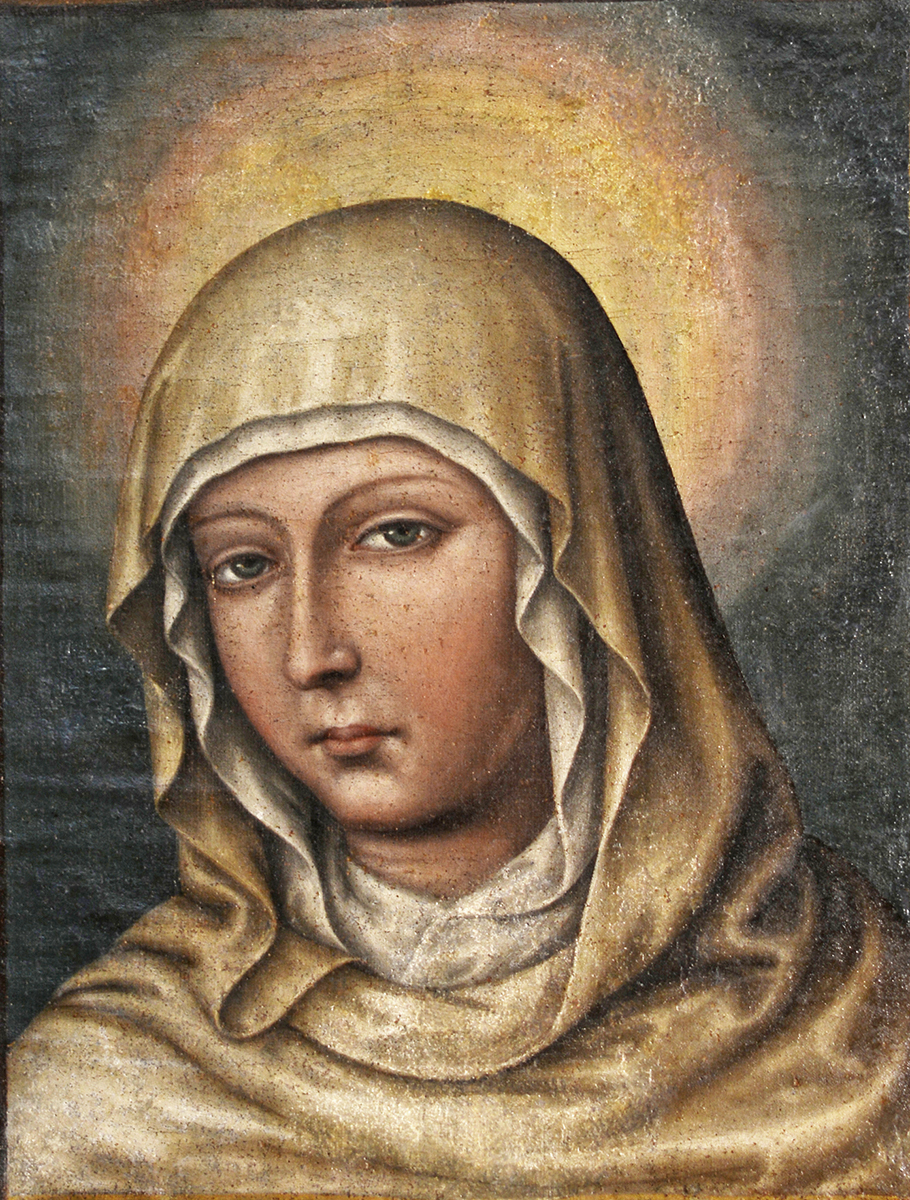Attributed to Nicolás Borrás (second half of the 16th century)
Oil on canvas
The Virgin gazes at us in silence, in an intimate and serene representation belonging to the iconographic type known as “the Veronica of the Virgin.” Shown in a half-bust and slightly turned to the right, she is veiled in a double white mantle set against a muted background. The painting reflects the influence of the vera effigies of Italian origin that spread across Europe from the 12th century, often attributed to Saint Luke. However, this particular model has its roots in the territories of the Crown of Aragon, promoted by the devout King Martin the Humane. The composition, marked by its sobriety and spiritual stillness, fits perfectly within the devotional sensibility of the Valencian Renaissance. The attribution to Nicolás Borrás is supported by the refined detail, the softness of the features, and the quiet gravity that characterizes his female figures. This Virgin, far from overt suffering, embodies a serene piety that invites contemplation and inner calm.

